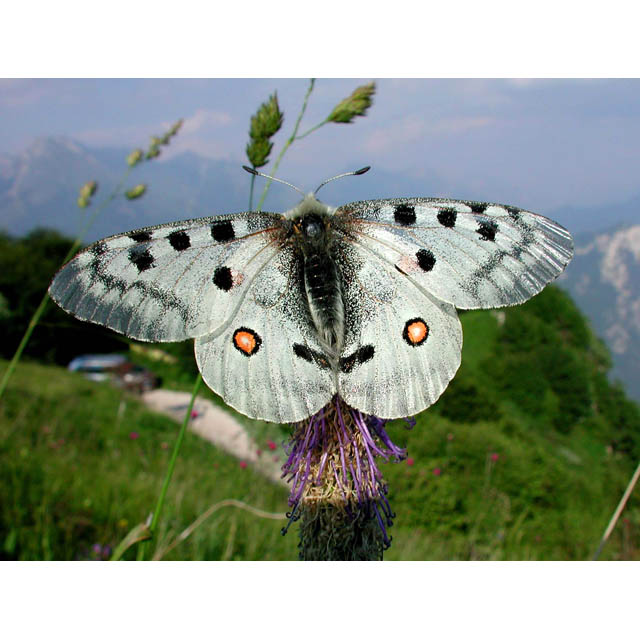
La Faune
La posizion gjeografiche particolâr de regjon Friûl-Vignesie Julie, vere aree di frizion tra diviersis regjons biogjeografichis, e justifiche la particolaritât dal so patrimoni faunistic singolâr.
Une vore di speciis animâls a jentrin in Italie midiant dai confins orientâi e setentrionâi de regjon Friûl Vignesie Julie.
La aree considerade no si limite al bacin idrografic dal Lât dai Trê Comuns e ae Mont di Sant Simeon, ma e je comprindude intun rai di 8-10 chilometris dal centri dal lât; chest al permet di componi un cuadri faunistic cetant plui siôr.
Chestis speciis, Anfibis, Retii e Mamifars di tiere ma ancje Uciei (nidificants), Moluscs e Insets pal plui si fermin sul teritori regjonâl e dome in cualchi câs si spostin viers lis zonis alpinis e prealpinis dal Venit e dal Trentin-Sud Tirol.
Tra chestis bestiis, veris zoiis faunistichis dal Nord Est talian, al risalte cualchi Mamifar tant che il riç orientâl, il siacal dorât, la surîs cu la schene verglemade, cualchi Anfibi e cualchi Retil.
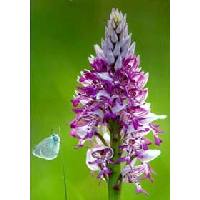
La Flore
Ancje la componente floristiche e rive a valôrs elevâts, stant che si puedin cjatâ cuasi 1.200 speciis di plantis vascolârs di 3.000 che a son in dute la regjon. Cheste alte concentrazion di speciis, determinade de posizion baricentriche strategjiche tra plane e mont, tra popolaments insubrics e ilirics, padans e alpins, che e à puartât - inte ricolonizazion postglaçâl - , ae composizion floristiche dal dì di vuê, e je inmò plui insiorade dai tancj elements endemics di origjin terziarie (paleoendemisims), che in chescj setôrs prealpins a àn cjatât ripâr dilunc des glaçazions cuaternariis.
La Gjeologjie
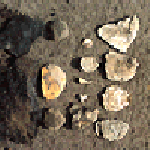
La carateristiche principâl de Mont, dal pont di viste morfologjic, e je chê de sô piche splanade. Cheste alture singolâr e je ce che al reste di une antighe superficie di splanament, salacor di etât pleoceniche, sorevivude ae grande erosion des corints principâls di glace che a rivavin une de Fele e chê altre dal Tiliment. Lis dôs corints di glace a cercenavin la Mont e si tornavin a cometi dome sot de Mont Naruint-Brancot, lant indenant viers la plane furlane.
Cuant che si è ritirade la glaçure, sù par jù 10.000 agns indaûr, si è rivâts a une decompression tant grande des cuestis de mont che a son stâts diviers slacs: cualchidun documentabil ancjemò cumò e cuntun cumulament evident di detrîts. Une vore di incisions a ingjavin i flancs erts de Mont, ma in nissune si cjate un cors di aghe perpetui.
I crets che a formin la Mont di Sant Simeon - come lis dolomiis e i calcârs dolomitics, i calcârs e i calcârs silicifars, lis ponchis a scaiis e il conglomerât dal Tiliment - a àn une etât che e va dai 200 ai 65 milions di agns, stant che a apartegnin a periodis che a van dal Noric al Cretacic Superiôr.
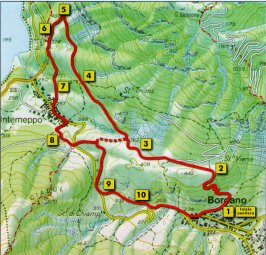
Il Troi Entomologjic
A pocje distance di Udin, sot de Mont di Sant Simeon, il Comun di Bordan al à progjetât e realizât il Troi Entomologjic, un percors vuidât ae discuvierte de piçule faune dal "Paîs des Paveis".
Il Troi Entomologjic di Bordan al vûl jessi l'ocasion par chei che, apassionâts di nature o sempliçs escursioniscj, a vulin svicinâsi al mont des paveis.
Dîs cartei, metûts dilunc il percors, a vuidin il visitadôr ae cognossince de faune de mont di Sant Simeon, che e conte plui di 100 speciis di paveis diurnis e cirche 550 di chês noturnis.
Il Comun di Bordan, in colaborazion cu la Cooperative Naturaliscj "Michele Gortani" di Udin, e à slargjât la sô ufierte di turisim naturalistic di cualitât cu la realizazion di un Troi Entomologjic fûr pes rivis dal Sant Simeon. La mont, che e sintetize cuasi dal dut la realtât ambientâl des Prealps Cjargnelis, e je stade di simpri un pont di riferiment par ricercjis entomologjichis che a àn metût in lûs la ricjece faunistiche e la grande diversitât biologjiche.
Dislocazion dai cartei:
La Mont di Sant Simeon
Dal ûf ae pavee
Osservìn un adult
Paveis in Primevere I
Paveis in Primevere II
Paveis in Istât I
Paveis in Istât II
Paveis Noturnis
Paveis in Istât III
Conservazion e protezion
La Vegjetazion
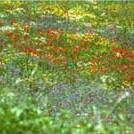
Pe sô posizion gjeografiche isolade, pe esposizion al soreli otimâl e pe varietât microclimatiche, la mont di Sant Simeon e da dute la sô potenzialitât di vegjetazion e cussì, cundut che no je masse alte, e je un struc cuasi complet de realtât ambientâl e vegjetâl des Prealps Furlanis.
Di fat, in cirche 1.300 m di escursion di altitudin, si passe de vegjetazion di spuinde e ripariâl dal flum Tiliment e dal Lât di Cjavaç ai masarêts di mont cun laris e alaçs, des cretaiis cui eliçs aes dolinis neveadis de cime.
Dal pont di viste fisionomic, la mont e à une vegjetazion no omogjenie di une rive a chê altre, pe morfologjie diferente e par fatôrs acidentâi tant che slacs e fûcs, o par vie des pratichis cultivis slungjadis tal timp tant che i roncs, il tai di boscs ceduis, il seâ prâts e fâ passons, e il bandonâju.
Nature (English version)
Fauna
The distinctiveness of the Friuli-Venezia Giulia fauna is mainly due the region being the crossroad of different bio-geographical areas.
In fact, many animal species enter Italy on the Eastern and Northern borders of Friuli Venezia Giulia.
The territory we consider is larger than the one delimitated by the hydrographic basin of the Cavazzo lake and Mt. San Simeone, extending itself with a radius of 8/10 kilometres from the basin centre.
In this area live a great number of species: amphibians, reptiles and terrestrial mammals together with birds, molluscs and insects.
The great majority of them is sedentary while a few travel as far as the Alps and their foothills in the regions of Veneto and Trentino Alto Adige. Among these species, some can be positively considered as jewels, such as the oriental hedgehog, the golden jackal, the back-striped vole, a few amphibians and reptiles.
Flora
Of the 3,000 species of vascular plants thriving in Friuli Venezia Giulia, 1,200 are present in this territory. Such an incredible concentration is due to the central position of this area, situated between plains and mountain ranges, and to the migration of people from eastern Europe, the Po valley and the regions north of the Alps.
Settling in this area during the post-glacial re-colonization, these populations contributed to the creation of the present flora. The number of species was further increased by several endemic varieties, originated during the Tertiary, that have survived here the rigours of the Quaternary glaciation.
Geomorphology of the Territory
The main peculiarity in the morphology of Mt. San Simeone is represented by its levelled top.
This plateau is the relict of an ancient levelling surface, probably dating back to the Pliocene epoch, which survived the intense ice erosion from two glaciers, one originating from the Fella's basin and the other from the Tagliamento's, which encircled the mountain and met below Mount Naruint-Brancot and reached the Friuli plain. Once the glaciers started to recede, about 10,000 years ago, they produced a powerful decompression on the mountain faces, originating several landslides whose effects are still clearly visible in the configuration of the ground and in the presence of tills.
In the past, numerous riverbeds have carved the steep slopes of the mountain. Today, none of these watercourses has waters flowing in it all through the year. The rocks that form Mt San Simeone are dolomites, dolomitic and flint limestones, marls and conglomerates from the Tagliamento river. Their formation took place between 200 and 65 million years ago and they belong to a geological period going from the Norico to the Cretaceous.
Entomologic Trail
Not far from Udine, on the slopes of Mount San Simeone, the common of Bordano has designed and created an Entomologic Trail, that allows the visitor to discover the small and fascinating inhabitants of the "Butterfly Country". The entomologic trail of Bordano represents an opportunity for all nature and walking lovers, of coming into contact with the world of butterflies. Ten signs, dislocated along the trail, show the visitors the most suitable places where the 1,000 diurnal species and the over 550 nocturnal ones live and reproduce themselves. Thanks to this trail, winding on the slopes of Mt San Simeone, the common of Bordano in co operation with the Cooperative Naturalisti "Michele Gortundi" of Udine, can offer to the tourist a novel way of coming into contact with nature in an extraordinarily rich environment. In fact, the habitats of Mt San Simeone include all those present on the foothills of the Carniche Alps and several researches carried out in this region have confirmed the abundance of animal species and their remarkable biological diversity.
Location of signs:
Mt. San Simeone
From the egg to the butterfly
Let's observe a grown-up butterfly
Butterflies in Spring I
Butterflies in Spring II
Butterflies in Summer I
Butterflies in Summer II
Nocturnal Butterflies
Butterflies in Summer III
Preservation and protection
Vegetation
Thanks to its isolated position, optimal insolation and variety in microclimates, Mt. San Simeone can offer an almost complete range of environments and vegetation habitats peculiar to the foothills of the Friuli's Alps. Ascending the approx. 1300 metres which divide the plain from the peak of the mountain, we can firstly admire the vegetation characteristic of the slopes and the banks of the Tagliamento's river and the Cavazzo's lake, followed by larches and mugo pines typical of the wet mountain's areas. Higher, we find rocky stretches covered with holm-oaks and finally the snow-covered dolines of the summit. The non-homogeneous vegetation of the slopes is due to the different morphology of the ground and also to landslides, fires and cultivation practices such as terracing, felling and the creation of meadows and pastures now left untended. Despite these interferences, the vegetation on Mt San Simeone, even with the inevitable asymmetry between its slopes, presents a pretty regular division into zones according to the altitude.
